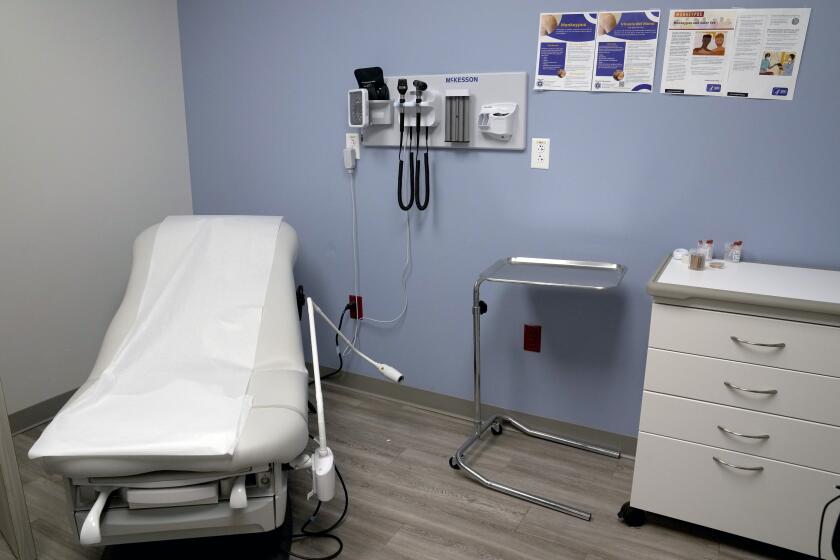Oil enters triple-digit territory
It was a single trade in the middle of a slow day on the New York Mercantile Exchange that sent crude oil to $100 a barrel.
The fundamentals of supply and demand were responsible too. But the driver Wednesday was one record-setting purchase -- for a single lot, or contract, of 1,000 barrels of the benchmark grade of U.S. crude scheduled for delivery in February.
Nobody had ever paid $100 a barrel before on the Nymex or, possibly, anywhere else.
“I’m calling it the one lot heard around the world,” said Phil Flynn, senior market analyst at Alaron Trading Corp.
The big buy pushed light, sweet crude up $4.02 to $100 at midday. The previous peak trading price was $99.29 on Nov. 21.
“For 30 years, we’ve been talking about how we’d never get to $100 oil,” said Amy Myers Jaffe of Rice University’s James A. Baker III Institute for Public Policy in Houston. “Psychologically, that’s just shocking.”
The historic moment was fleeting. Oil closed at $99.62, up $3.64.
Still, that was a record, beating $98.18 the day after Thanksgiving. And it was distant from a year ago. On Jan. 2, 2007, oil closed at $61.05. (Adjusted for inflation, the price in April 1980 was between $99.04 and $101.70, depending on whose calculations you use.)
Flynn and other analysts, along with some economists and politicians, said the blame for $100 oil should be shared by speculators and the government.
The Bush administration said Wednesday that it wouldn’t release any crude from the Strategic Petroleum Reserve -- a move that could have checked prices by putting more product on the market -- and added that it planned to continue buying until the reserve was full. Sen. Charles E. Schumer (D-N.Y.) called the Bush plan “counterproductive.”
Traders were influenced by other events and worries, including political unrest in Nigeria and Pakistan and the falling value of the dollar, the currency used in the world oil market. In addition, the effect of the 1,000-barrel trade was magnified by anemic post-holiday volumes that were well below normal for the New York exchange.
“But more than anything, it was the market’s obsession with $100-a-barrel oil,” Flynn said. “It really shows you that when a market is fixated on a particular price, it has a tendency to sometimes get there.”
Whatever the cause, oil is well above $99, and that threatens to make gasoline, diesel and home heating oil prices rise.
The odds of a jump at the pump increased as futures traders bid up the price of gasoline for February delivery to a record-high trade of $2.578 a gallon, then finished the day with a peak close of $2.569 a gallon, up 7.81 cents.
Motorists are already dealing with prices at unprecedented highs for this time of year. Nationwide, the average cost of self-serve regular gasoline was $3.049 a gallon Wednesday, almost 73 cents higher than a year earlier, according to AAA. In California, the average was $3.314 a gallon, up more than 66 cents compared with Jan. 2, 2007.
Some believe the average could reach $3.50 to $3.75.
“The problem for the consumer is that if they hear that oil is hitting $100 . . . they know that the gas price will be pushing up further above $3,” said Nigel Gault, chief U.S. economist at Global Insight.
“And the higher gasoline prices are coming on top of a lot of other problems.”
Diana Diaz, a choir and piano instructor at Duarte High School, was dreading the trickle-down effect.
“It makes me angry. It makes everything more difficult and more expensive. This means that the price of milk is going to go up. Even my cup of coffee is going to be more because of these oil and gas prices,” said Diaz, 37, who has cut most of her driving down to three essentials: work, singing engagements and visits to her boyfriend in San Pedro. “I’m living at home to save money; there really isn’t any more that I can do.”
The world’s oil supplies are delicately balanced with global demand. The outlook for the next 12 months is better than it was a year ago, though, because demand is easing and production is expected to rise.
“The world produced more oil in November than we ever have before,” said Flynn of Alaron Trading. “I think that could improve next year.”
And so far, shockingly high oil prices have merely eased demand; they haven’t flattened the economy.
“We all imagined that the day that we would have $100 oil would be the day of total crisis. And we’re here, and we’re all blase,” said Rice University’s Jaffe. “I think it’s unwise to think that.”
Demand for oil and its chief product, gasoline, is starting to falter, especially in the U.S., beset by a dive in housing prices, rising foreclosures and high debt loads.
In California, the world’s third-largest market for gasoline, consumption has fallen for six consecutive quarters.
Lu Mohler, owner of the Latte Lu coffee bar in Cardiff-by-the Sea, Calif., tends to customers from a stand at a Valero gas station. They’ve been cutting back.
“They’ll buy a regular coffee instead of a latte,” Mohler said. That means $1.75 instead of $3.25. “Or they might come here once a week instead of once a day.”
That took a toll, she said. “I had the hardest year ever.”
elizabeth.douglass @latimes.com
--
Times staff writer Ronald D. White contributed to this report.
More to Read
Start your day right
Sign up for Essential California for news, features and recommendations from the L.A. Times and beyond in your inbox six days a week.
You may occasionally receive promotional content from the Los Angeles Times.





